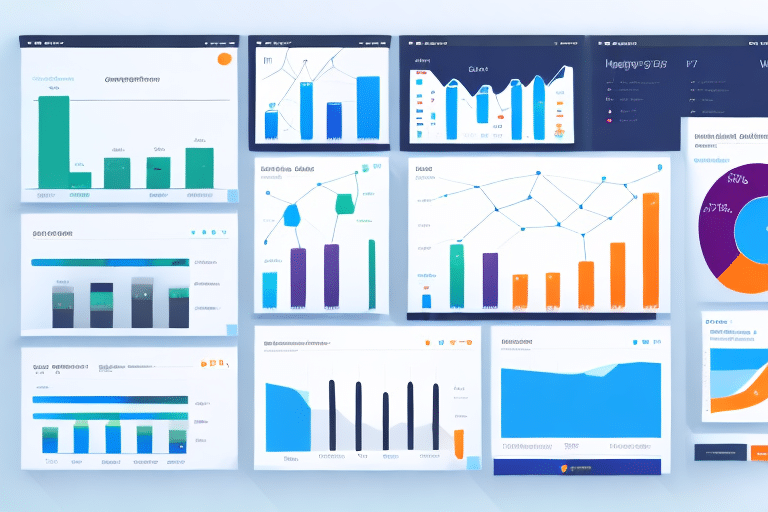Understanding Ecommerce Scaling
Scaling your ecommerce business is essential to meet growing demand without sacrificing quality or customer satisfaction. Effective ecommerce scaling involves managing increased traffic, orders, and operations seamlessly. Without proper scaling, businesses risk losing momentum, declining revenue, and damaging their reputation.
One of the primary advantages of scaling is the ability to expand your customer base and enter new markets. By scaling operations, you can offer your products to a broader audience, enhancing brand awareness and fostering customer loyalty. However, it's crucial to conduct thorough market research and adapt your marketing and sales strategies to suit new demographics and regions.
Key Factors Driving Increased Demand
Expanding Customer Base
A growing customer base naturally leads to increased orders and website traffic. Implementing effective marketing strategies that target a wider audience can further boost your sales and expand your reach.
Effective Marketing Strategies
Comprehensive marketing plans that leverage SEO, social media, email marketing, and paid advertising can drive significant traffic to your site. For instance, according to Statista, businesses that utilize multichannel marketing strategies see higher conversion rates.
Social Proof and Customer Reviews
Positive reviews and testimonials enhance trust and credibility, encouraging more visitors to make purchases. Platforms like Shopify emphasize the importance of social proof in driving sales.
Quality Products and Services
Offering high-quality products or services builds customer trust and leads to repeat business, which is a key driver of sustained demand.
Convenience and Accessibility
The rise of mobile devices and the internet has made online shopping more convenient than ever. Ecommerce businesses that prioritize user experience and offer seamless shopping experiences are more likely to see increased demand.
Recognizing When to Scale Your Business
Increased Orders and Traffic
Consistent growth in orders and website traffic is a clear indicator that your business is ready to scale.
Operational Bottlenecks
If you encounter challenges in fulfilling orders or managing inventory, it might be time to scale to ensure smooth operations.
Plateaued Revenue Growth
A plateau in revenue growth suggests that your current market may be saturated, indicating the need to explore new markets or diversify your product offerings.
Overcoming Common Scaling Challenges
Managing Logistics and Fulfillment
Scaling often leads to increased inventory and shipping demands. Partnering with reliable fulfillment services and optimizing your supply chain are crucial steps. According to a report by Statista, efficient logistics can significantly reduce costs and improve customer satisfaction.
Hiring and Training
As demand grows, so does the need for a skilled workforce. Investing in hiring and training ensures that your team can handle increased workloads effectively.
Maintaining Brand Consistency
Ensure that your brand voice and image remain consistent across all channels to prevent customer confusion and maintain trust.
Cash Flow Management
Scaling requires investment. Carefully managing cash flow and exploring financing options like business loans or crowdfunding can support sustainable growth.
Developing a Comprehensive Scaling Strategy
Identifying Your Target Audience
Understanding your target audience is the foundation of a successful scaling strategy. Use tools like HubSpot’s Make My Persona to create detailed customer profiles.
Streamlining Operations
Optimize your order fulfillment process by enhancing shipping, packaging, and handling methods. Automation tools can help manage these processes more efficiently.
Upgrading Technology
Invest in ecommerce platforms that support automation, integrations, and advanced analytics. Platforms like Shopify and BigCommerce offer robust solutions for scaling businesses.
Leveraging Technology and Analytics for Scaling
Choosing the Right Technology Tools
Select technology that supports your scaling needs, including ecommerce platforms, payment processors, and customer service tools. For example, using a secure and flexible payment processor like Stripe can enhance transaction security and customer trust.
Utilizing Advanced Analytics
Analytics tools help monitor key performance indicators (KPIs) and optimize your strategies. Platforms such as Google Analytics provide valuable insights into customer behavior and sales performance.
Implementing Customer Support Solutions
Integrate AI-powered customer service systems or chatbots to handle increased inquiries efficiently. Tools like Zendesk can streamline your support processes.
Future-Proofing Your Ecommerce Business
Staying Agile and Adaptable
Anticipate market trends and changes in customer behavior to remain competitive. Regularly update your product offerings and adjust your strategies based on data-driven insights.
Expanding Product and Service Offerings
Diversifying your products or services can help you reach new customer segments and reduce dependency on a single revenue stream.
Investing in Customer Loyalty Programs
Implementing loyalty programs can enhance customer retention and encourage repeat purchases. According to a study by Forbes, loyalty programs significantly boost customer retention rates.
Conclusion
Scaling your ecommerce business successfully requires a strategic approach that encompasses understanding key drivers of demand, recognizing the right time to scale, overcoming common challenges, and leveraging the right technology and analytics. By developing a comprehensive scaling strategy and future-proofing your operations, you can manage increased demand effectively and achieve sustainable long-term growth. Regularly measuring your performance and adapting to market changes will help ensure continued success in the competitive ecommerce landscape.




















